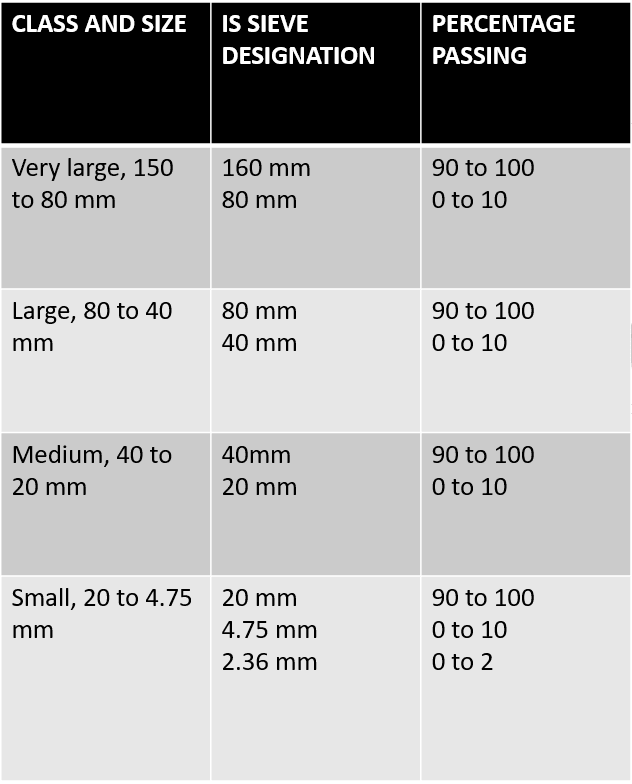Sizes Of Coarse Aggregates For Mass Concrete as Per IS:383
The sizes of coarse aggregates are four types, they are small, medium, large, and very large. Below, the aggregate sizes, and, IS sieve designation and percentage of passing are presented in the form of a table.

Read Also:
Different Grading Zone Value of Fine Aggregates(sand) As Per IS: 383